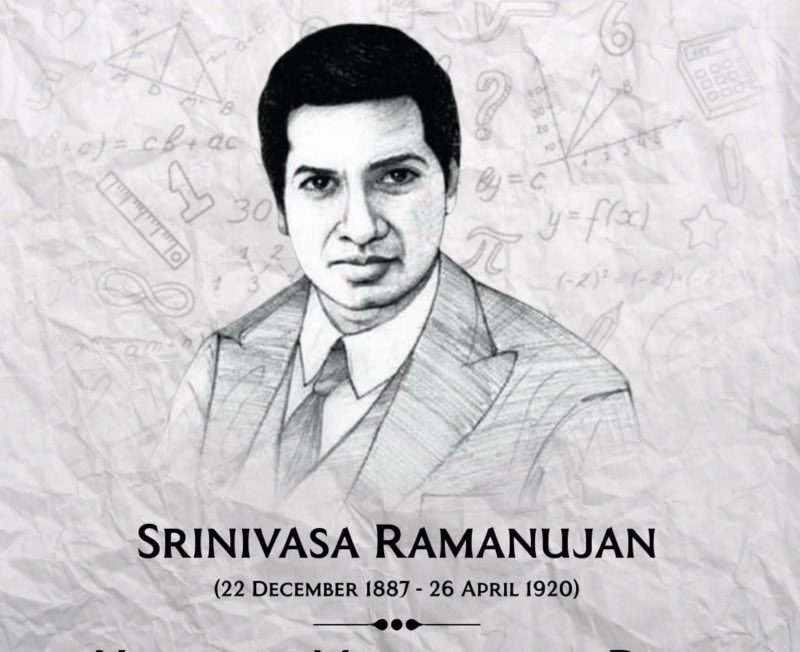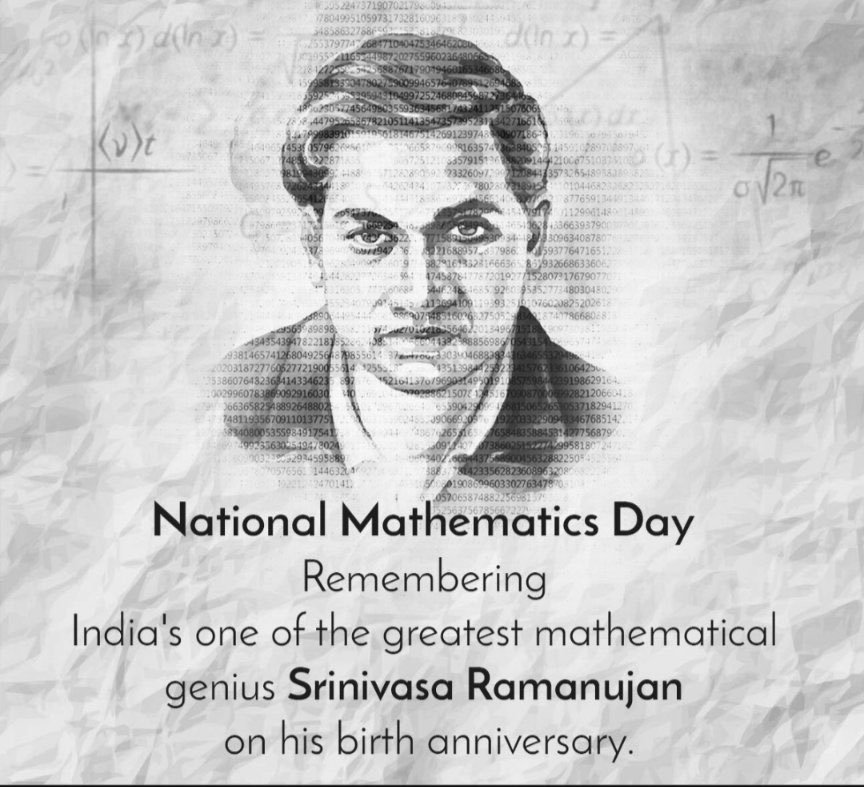National Mathematics Day and Srinivasa Ramanujan
1729 is the smallest number that can be expressed as a sum of cubes of two different sets of numbers. Ramanujan Square is another mathematical puzzle that enthrals everyone till date.

1729 is the smallest number that can be expressed as a sum of cubes of two different sets of numbers. Ramanujan Square is another mathematical puzzle that enthrals everyone till date.

On December 22, 2012, former Prime Minister Manmohan Singh declared the day as The National Mathematics Day to celebrate Ramanujan’s achievements. Henceforth, each year on December 22nd is being celebrated as National Mathematics Day in India in honour of one of the brightest minds Srinivasa Ramanujan. This day marks the birth anniversary of the legendary Indian mathematician who carved a niche for himself in the world of Mathematics around the globe at a very tender age.

The aim to commemorate the day as the National Mathematics Day is to encourage awareness among people about the importance of mathematics for efficient and inclusive development and progress of humanity.
Srinivasa Ramanujan was born on December 22, 1887, in Erode, Madras (the present day state of Tamil Nadu. He belonged to a very humble family who could barely afford two square meals, hence Ramanujan couldn’t afford any formal education in mathematics, which makes his massive contributions to mathematical fields like number theory, mathematical analysis, continued fractions and infinite series nothing short of a miracle and charisma.
In 1904, Ramanujan graduated from Town Higher Secondary School. Besides math, Ramanujan also attained distinctions among his peers in arithmetic, English, geography, and Tamil. On the virtue of his talent, the genius bagged a scholarship and got the opportunity to join the Government Arts College, Kumbakonam. However, Ramanujan refused to study any other subject than mathematics and thus got expelled from the college.
When Ramanujan worked for the Chief Accountant of the Madras Port Trust, at that time he sent his mathematical work to the renowned British mathematician GH Hardy. This became a turning point of his life as he got a call to join the Trinity College just a few months before World War I began. On the back of a PhD from Cambridge and several other accolades, he also earned the membership of the London Mathematical Society in 1917. Thereafter he became a Fellow of the Royal Society for his research on Elliptic Functions and theory of numbers. He also went on to become the first Indian to get elected as a Fellow of Trinity College in October of the very same year.
He returned back to India in the year, 1919. Plagued by health problems which he countered throughout his life lead to his he sad demise at a young age of 32, the following year.
Ramanujan’s biggest contributions are in the field of mathematical analysis, number theory, infinite series, and continued fractions. His work on Ramanujan prime, the Ramanujan theta function, partition formulae and mock theta functions continue to open new areas of research. Among the most famous are Ramanujan Number– also called the magic number which is 1729. It is the smallest number that can be expressed as a sum of cubes of two different sets of numbers. Ramanujan Square is another mathematical puzzle that enthrals researchers and students till date.
DISCLAIMER: The author is solely responsible for the views expressed in this article. The author carries the responsibility for citing and/or licensing of images utilized within the text.
